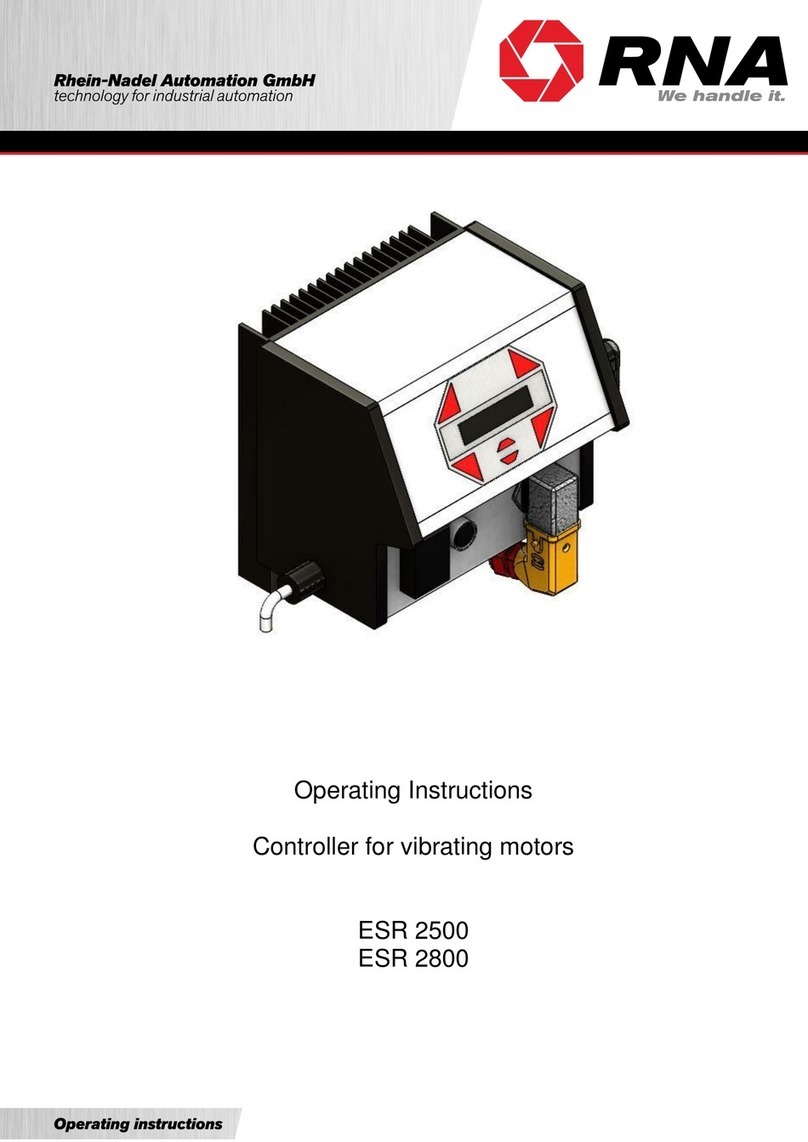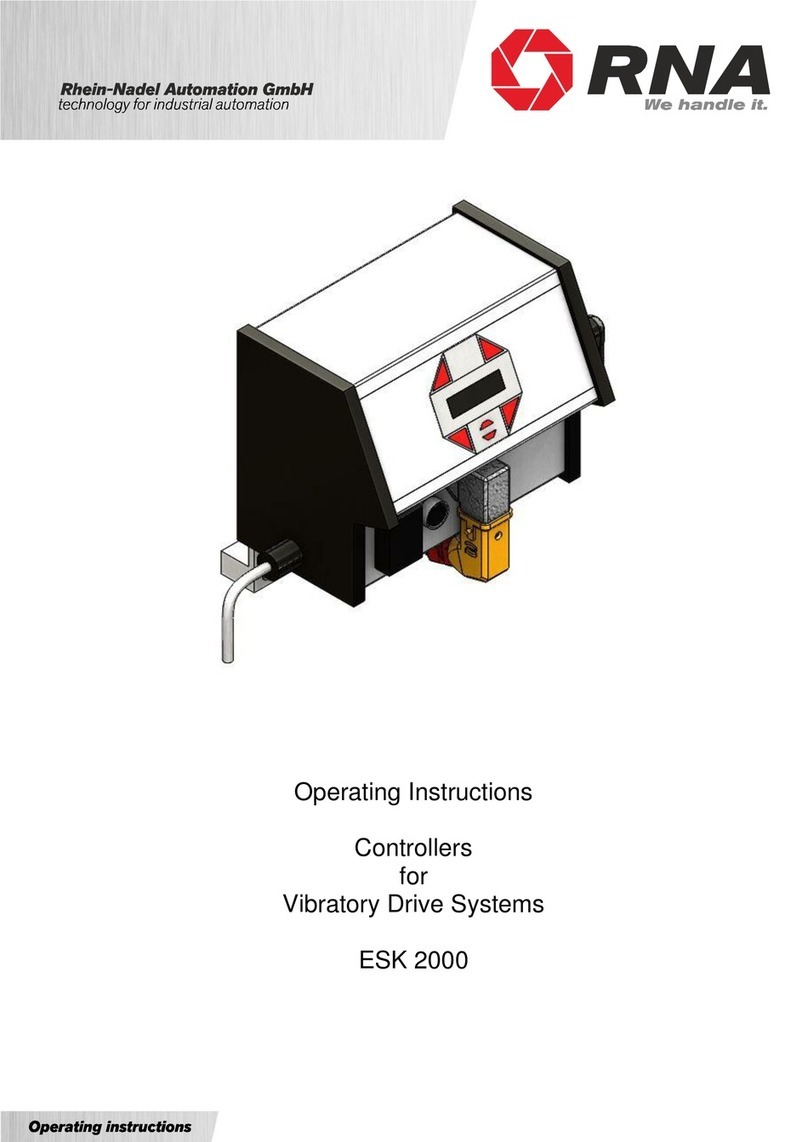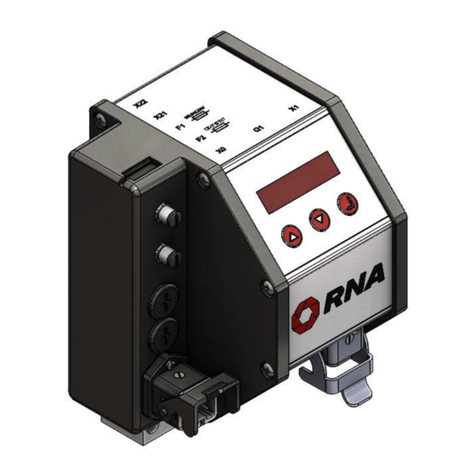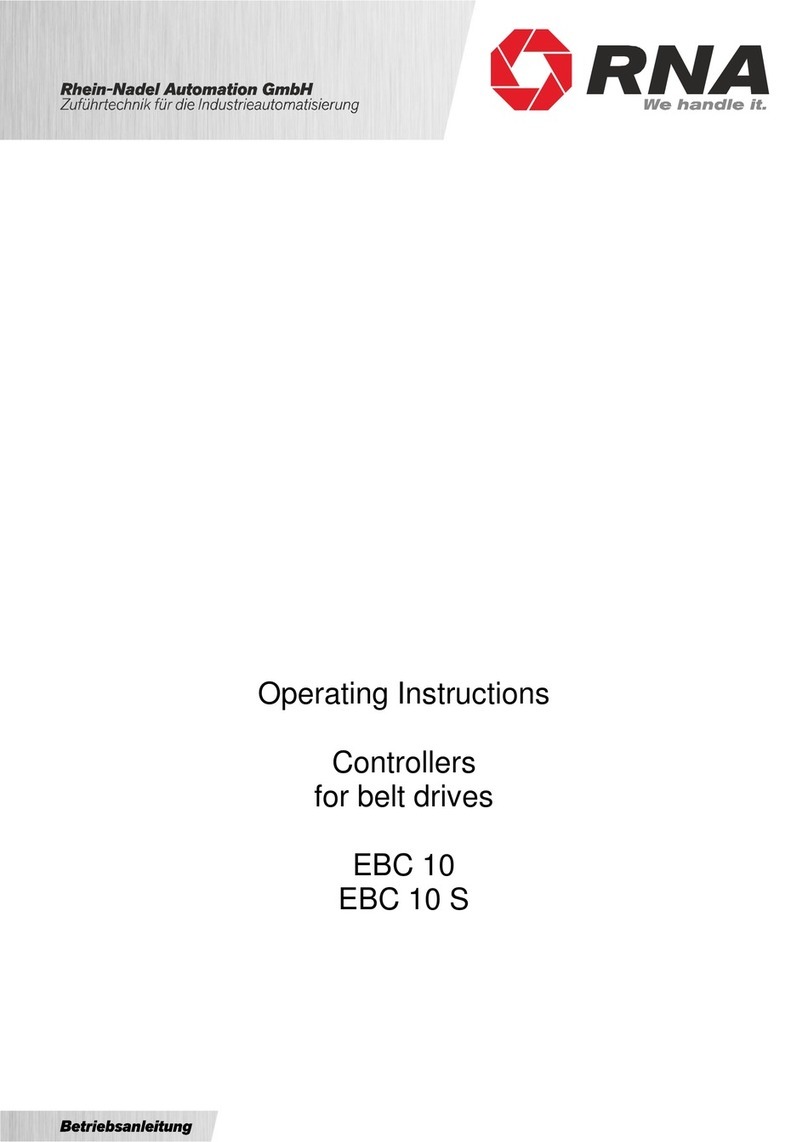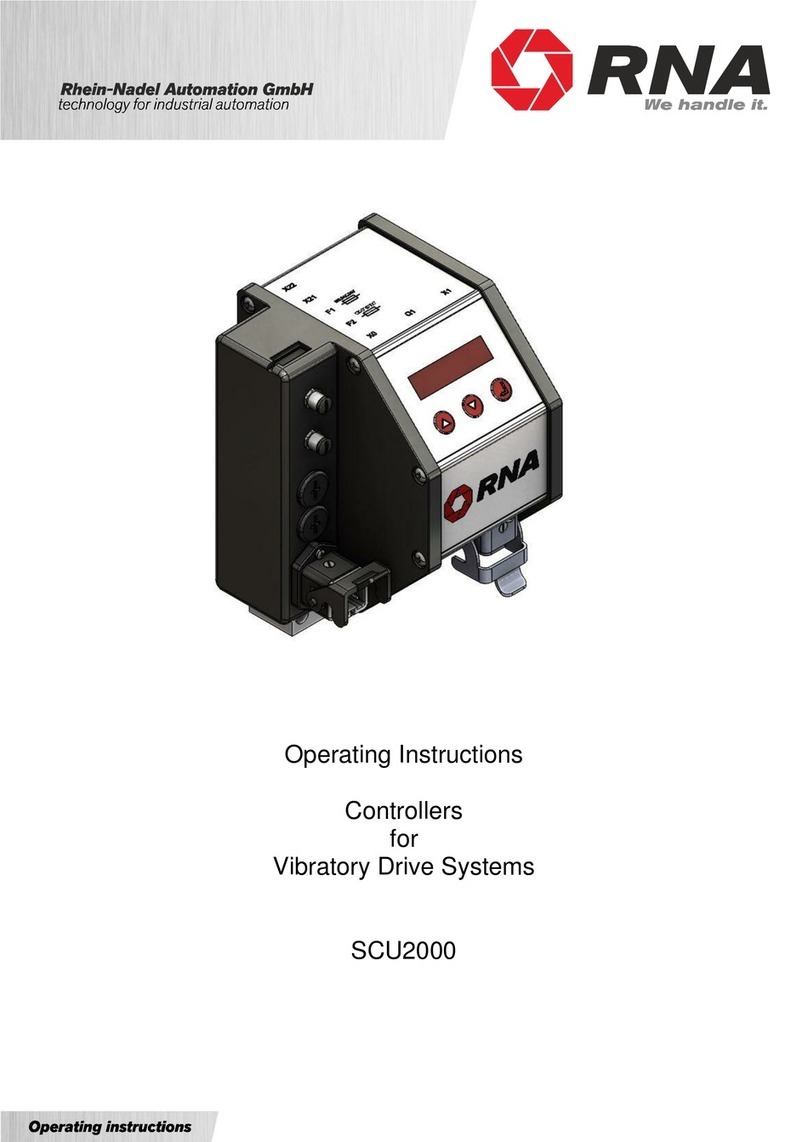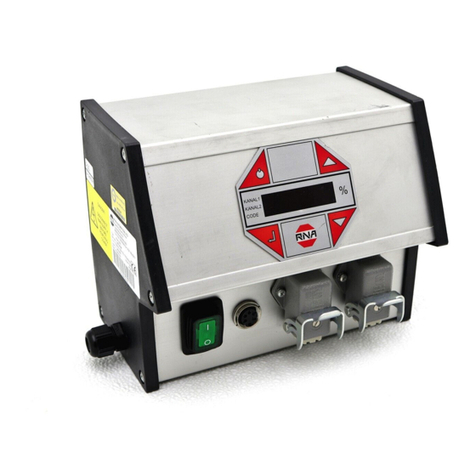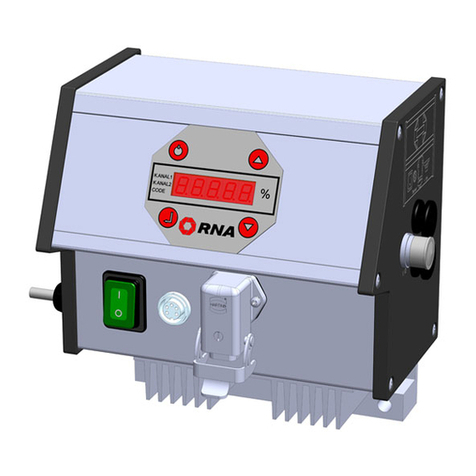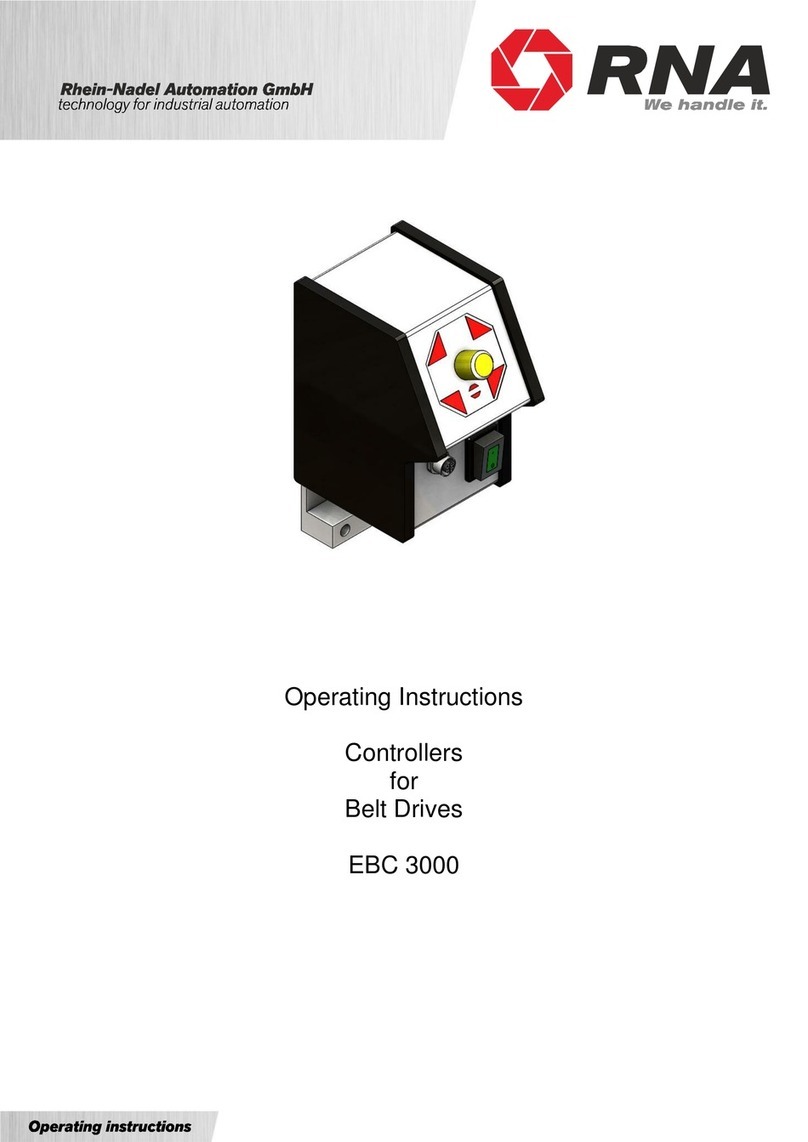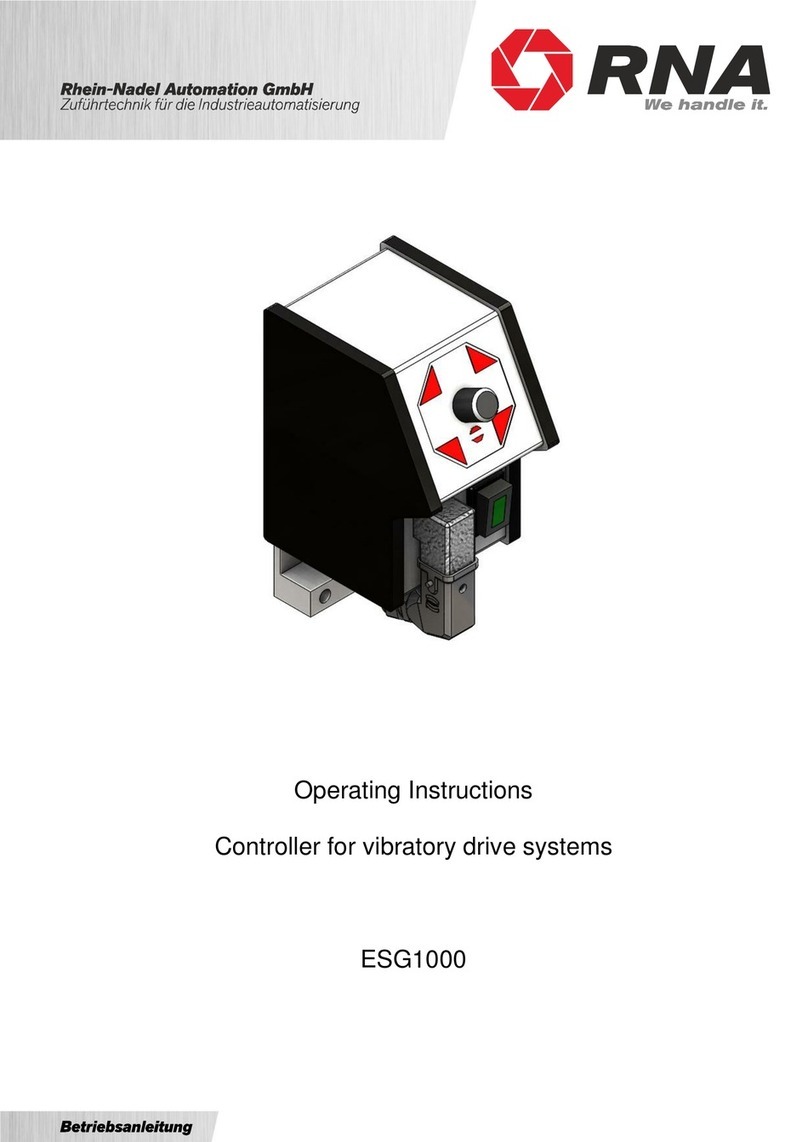Rhein-Nadel Automation GmbH 2
VT-BA-ESR-ESM3000-EN_2020 / 07.05.2020 SJ
Table of Contents
1. General ..................................................................................................................................5
1.1. EC Conformity.....................................................................................................................5
2. Function .................................................................................................................................6
2.1. Track control.......................................................................................................................6
2.2. Operating with two speeds (2 set points for coarse/fine switching).....................................6
2.3. Control inputs and output....................................................................................................6
2.3.1. Enable input .................................................................................................................6
2.3.2. Sensor input for track control........................................................................................6
2.3.3. External set point..........................................................................................................7
2.3.4. Output status relay.......................................................................................................7
2.3.5. Time-Out output 24 VDC..............................................................................................7
2.3.6. Air valve output 24 VDC...............................................................................................7
2.4. Display................................................................................................................................7
3. Construction...........................................................................................................................7
3.1. Enclosed units.....................................................................................................................7
3.2. Panel mounting units ..........................................................................................................7
4. Technical Data.......................................................................................................................8
5. Ordering Codes (Standard units) ...........................................................................................8
6. Settings..................................................................................................................................9
7. Control elements..................................................................................................................10
7.1. Settings.............................................................................................................................10
8. Commissioning.....................................................................................................................11
8.1. Assembling position..........................................................................................................11
8.2. Preliminary steps ..............................................................................................................11
8.2.1. Important points..........................................................................................................11
8.2.2. Operating frequency of the feeder coil .......................................................................11
8.2.3. Measurement of the output voltage and current.........................................................11
8.3. Putting the equipment into operation ................................................................................11
9. Setting Instructions...............................................................................................................12
9.1. User adjustment of throughput..........................................................................................12
9.2. Tuning the feed system.....................................................................................................13
9.2.1. Feeder settings...........................................................................................................13
9.2.2. Track control...............................................................................................................14
9.2.3. Sensor time out..........................................................................................................14
9.2.4. Set point source .........................................................................................................14
9.2.5. Pulse feed ..................................................................................................................15
9.2.6. Determining the resonant frequency ..........................................................................15
9.2.7. Display actual current and frequency.........................................................................15
9.2.8. Save selected parameters..........................................................................................15
9.2.9. Recall user or factory settings....................................................................................16
9.2.10. Hide parameter menus............................................................................................16
10. Error messages / ERROR reset...........................................................................................17
11. Connections for enclosed construction ................................................................................18
11.1. Connections for enclosed construction..........................................................................19
12. Connections for 6 A panel mounting versions......................................................................20
13. Dimensions - Enclosed construction....................................................................................21
13.1. Dimensions –Panel mounting.......................................................................................22
14. Service appendix..................................................................................................................23
14.1. Service Menu.................................................................................................................23
14.2. Frequency adjustment range.........................................................................................23
14.3. Current limiting ..............................................................................................................24






